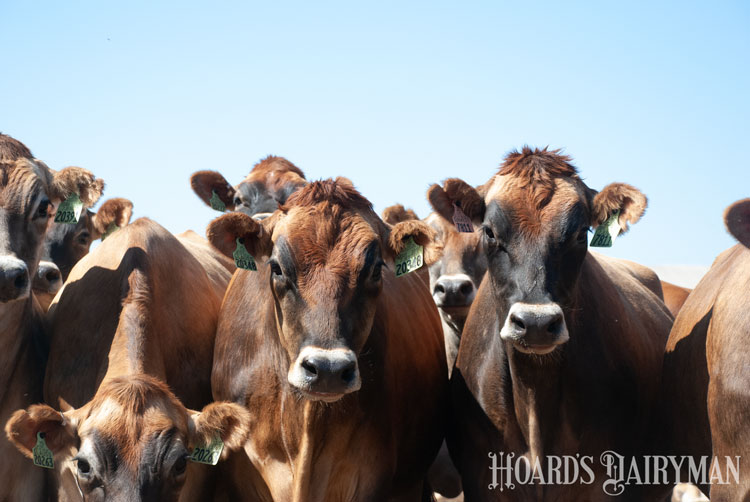
Efficiency is the name of the game on dairies no matter what resource you’re talking about. Time, money, and facilities are the areas we commonly think about maximizing results from, but another asset we can think about efficiently is our animals.
Feed efficiency has gained attention in recent years as a significant way to make progress in this pursuit, and dairy farmers can now even select for the Feed Saved trait in their herds. The residual feed intake (RFI) data used in that trait is a way to think about how the energy the cow intakes is being used, said Faith Reyes during a Badger Dairy Insights webinar. The University of Wisconsin-Madison Division of Extension dairy outreach specialist noted that about two-thirds of a cow’s energy goes to milk production, another 23% goes toward maintenance, 5% is directed to body reserves, and the rest can be considered as RFI.
In addition to the genetic component of feed efficiency, there are management strategies that affect how efficiently a cow turns its feed into milk and body maintenance. Reyes pointed to a study that compared feed efficiency in primiparous and multiparous cows grouped in same parity pens or mixed parity pens.
“Mixed parity grouping did tend to impact feed efficiency,” she said, explaining that combining animals of different ages led to more competition at the feedbunk and longer meal times when cows did access feed. That extended eating time reduced measurements of feed efficiency.
Competition at the feedbunk is also greater when pens are stocked at a higher rate. To encourage your cows’ natural ability to convert feed efficiently, Reyes encouraged grouping first-lactation cows on their own when possible and avoiding overstocked groups.
Smooth handling
Another area where animals can be managed efficiently is when they are being handled, Reyes continued. Calm, low-stress handling will allow processes like moving, checking, or treating animals to happen more quickly and easily, saving time and energy for both humans and animals.
To do so, Reyes reminded dairy farmers to use a cow’s flight zone and natural instincts to move them. If a person is inside the flight zone, being behind the animal’s point of balance (which is the shoulder or up to the ear, Reyes said) will encourage them to move forward, while being ahead of the point of balance will move them backward.
“The size of flight zone can vary depending on the animal and the type of environment,” she noted. Handlers should also avoid standing directly behind an animal in its blind spot.
Reyes added that cows are visual animals by nature, but they have poor depth perception. This means shadows, beams of light, or changes in flooring type can cause them to stop, spook, or jump. Consider these factors when designing animal handling facilities, she said, and recognize them when you are handling cattle. Can you make adjustments to block or avoid light, remove distracting items, or prevent rushing cows over changing floor surfaces? This will allow cows to move more smoothly and safely in the direction you want them to and avoid challenges or injuries for the people working with them.
Whether it is handling cows efficiently or allowing them to express their natural efficiencies, a dairy farm must take a team approach to helping utilize its most significant resource — livestock — to the best of its ability. It can be a simple way to save time, money, and effort while keeping cows and people safe and healthy.








